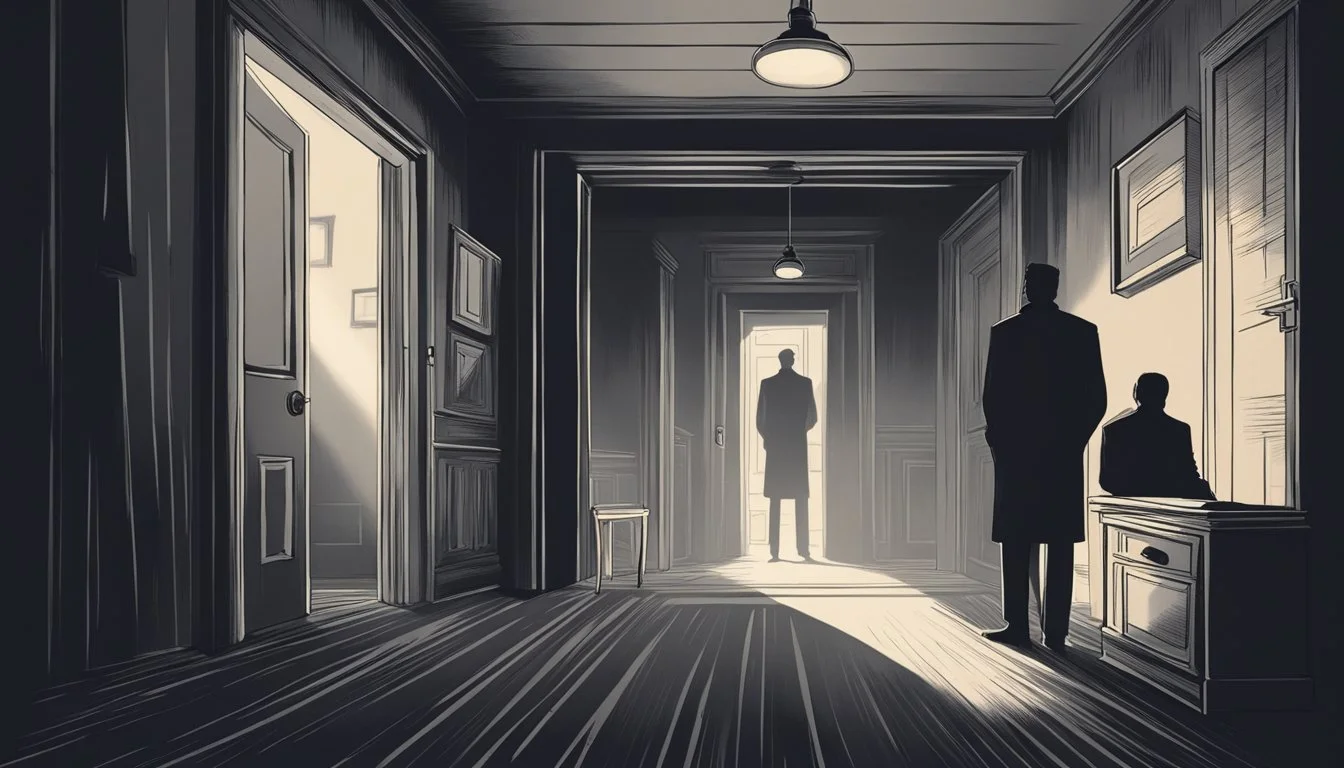Navigating Adolescent Paranoia: Understanding and Supporting Teens
Paranoia in teens is a complex mental health issue that can manifest as intense suspicion, irrational fears, and unfounded mistrust of others. While occasional worries are normal during adolescence, persistent paranoid thoughts may indicate a more serious condition. Signs of paranoia in teens include extreme mistrust of people in their lives, persistent fear in typical situations, and recurring anger without clear cause.
Recognizing paranoia in young people can be challenging, as it may be confused with typical teenage moodiness or social anxiety. However, paranoid thoughts that interfere with daily life and relationships warrant attention. Teens experiencing paranoia may struggle to relax, exhibit defensiveness toward imagined criticism, and have difficulty forgiving perceived slights.
Parents and caregivers should be aware that paranoia can be associated with various mental health conditions, including paranoid personality disorder and, in rare cases, schizophrenia. Early identification and professional evaluation are crucial for proper diagnosis and treatment, ensuring the best possible outcomes for youth mental health.
Understanding Paranoia
Paranoia in teenagers involves irrational thoughts and beliefs centered on mistrust and suspicion. It can range from mild, fleeting concerns to severe, persistent delusions that significantly impact daily life.
Definition and Distinctions
Paranoia refers to unfounded thoughts that others intend harm or are "out to get" the individual. In teens, these thoughts may focus on peers, teachers, or family members. Paranoid thoughts differ from normal teenage concerns about fitting in or being judged.
Mild paranoia can manifest as excessive worry about others' intentions. Severe cases may involve fixed false beliefs (delusions) resistant to contrary evidence. Paranoid personality disorder and delusional disorder are distinct conditions characterized by long-term patterns of paranoid thinking.
Symptoms of paranoia in teens can include:
Intense suspicion of others' motives
Reluctance to confide in people
Angry or defensive reactions to perceived slights
Difficulty accepting criticism
Recurring thoughts of being watched or targeted
Prevalence in Adolescents
Paranoid thoughts are relatively common in adolescence, with most experiencing mild, transient paranoia. Studies suggest 10-15% of teens report frequent paranoid ideation. Severe, clinically significant paranoia is less common, affecting 1-3% of youth.
Risk factors for paranoid thinking in teens include:
Social isolation
Bullying or trauma
Substance use
Family history of mental health disorders
High stress environments
Paranoia often emerges or intensifies during adolescence due to brain development, hormonal changes, and increased social pressures. Early identification and intervention are crucial for managing paranoid thoughts and preventing long-term impacts on mental health.
Causes and Risk Factors
Paranoia in teens stems from a complex interplay of biological, environmental, and psychological factors. While the exact causes remain unclear, several key influences have been identified.
Biological and Genetic Influences
Genetic predisposition plays a role in paranoid tendencies. Teens with a family history of mental illnesses like schizophrenia, bipolar disorder, or borderline personality disorder face an elevated risk.
Brain chemistry imbalances, particularly in neurotransmitters like dopamine, can contribute to paranoid thoughts. Hormonal changes during puberty may also impact mental health and potentially trigger paranoid symptoms.
Certain medical conditions affecting the brain, such as temporal lobe epilepsy or brain injuries, can sometimes manifest as paranoid behaviors in adolescents.
Environmental and Social Contributors
Childhood experiences significantly shape a teen's mental health. Trauma, abuse, or neglect during formative years can lead to trust issues and paranoid thinking patterns.
Bullying and social isolation are potent risk factors. Teens who face persistent social rejection or victimization may develop heightened suspicion as a defense mechanism.
Exposure to high-stress environments, such as unstable home lives or dangerous neighborhoods, can foster a sense of constant threat and paranoia.
Cultural factors like discrimination and racism can also contribute to paranoid ideation in minority teens who experience ongoing prejudice.
Psychosocial Stressors
Intense academic pressure and performance anxiety can fuel paranoid thoughts in achievement-oriented teens.
Social media and constant connectivity may exacerbate paranoia through cyberbullying, social comparison, and fear of missing out (FOMO).
Major life changes, such as parental divorce or moving to a new school, can disrupt a teen's sense of security and potentially trigger paranoid symptoms.
Substance abuse, particularly use of stimulants or hallucinogens, can induce paranoid states in vulnerable adolescents.
Signs and Symptoms
Recognizing paranoia in teens involves observing specific behavioral, cognitive, and emotional changes. These signs often manifest as suspicion, mistrust, and altered perceptions of reality.
Behavioral Indicators
Teens experiencing paranoia may exhibit noticeable changes in their actions and interactions. They might become increasingly withdrawn, avoiding social situations and isolating themselves from friends and family. Defensive behavior is common, with teens reacting aggressively to perceived threats or criticism.
Some may engage in excessive checking behaviors, such as repeatedly locking doors or inspecting their surroundings for danger. Academic performance often declines as paranoid thoughts interfere with concentration and motivation.
Teens might also display unexpected changes in their routines or habits, like altering their usual routes to school or refusing to use electronic devices due to fears of surveillance.
Cognitive Aspects
Paranoid thoughts significantly impact a teen's cognitive processes. They may express persistent beliefs that others are plotting against them or intending harm, despite a lack of evidence. These thoughts can range from mild suspicions to elaborate conspiracy theories.
Misinterpretation of neutral events as threatening is common. For example, a teen might perceive laughter from classmates as mockery directed at them. Some teens develop grandiose delusions, believing they possess special powers or importance.
Difficulty concentrating and making decisions often occurs as paranoid thoughts occupy their mind. Teens might also experience intrusive thoughts or become preoccupied with perceived threats.
Emotional Responses
Paranoia in teens is often accompanied by intense emotional reactions. Anxiety is a primary emotion, with teens feeling constantly on edge or expecting something bad to happen. This anxiety can manifest physically as restlessness, sweating, or rapid heartbeat.
Fear is another prominent emotion, sometimes escalating to panic in situations perceived as threatening. Teens may express persistent worry about their safety or the safety of loved ones.
Anger and irritability are common responses to paranoid thoughts. Teens might lash out at those they believe are conspiring against them. Mood swings can be frequent, with sudden shifts from calm to agitated states.
Feelings of suspicion and mistrust can lead to emotional detachment or numbness as a coping mechanism. Some teens may experience depression or hopelessness in response to their paranoid thoughts.
Diagnostic Evaluation
Identifying paranoia in teens requires a comprehensive approach involving clinical assessment, differential diagnosis, and application of diagnostic criteria. Mental health professionals use various tools and techniques to evaluate symptoms and determine appropriate treatment.
Clinical Assessment
Psychiatrists and other mental health professionals conduct thorough evaluations to assess paranoid symptoms in teens. These assessments typically involve structured interviews, behavioral observations, and psychological testing. Clinicians gather information about the teen's thoughts, feelings, and experiences related to distrust and suspicion.
Warning signs that may prompt evaluation include intense fear of others, social withdrawal, and persistent beliefs of being harmed or persecuted. Family history and developmental factors are also considered. Mental health professionals pay close attention to the duration and impact of symptoms on daily functioning.
Differentiating Paranoid Disorders
Distinguishing between various paranoid disorders is crucial for accurate diagnosis and treatment. Paranoid symptoms can occur in multiple psychiatric conditions, including schizophrenia, delusional disorder, and other psychotic disorders.
Paranoid schizophrenia involves persistent delusions and hallucinations, while delusional disorder primarily consists of non-bizarre delusions without other psychotic features. Clinicians carefully evaluate symptom patterns, onset, and progression to differentiate between these conditions.
Other psychiatric disorders that may present with paranoid features, such as severe anxiety or depression, must also be considered. Substance-induced paranoia is another important differential diagnosis, especially in adolescents.
Use of Diagnostic Criteria
Mental health professionals rely on established diagnostic criteria to ensure consistent and accurate diagnoses. The Diagnostic and Statistical Manual of Mental Disorders (DSM-5) provides specific criteria for paranoid disorders.
For paranoid schizophrenia, criteria include the presence of delusions, hallucinations, and negative symptoms for at least six months. Delusional disorder requires non-bizarre delusions lasting one month or longer.
Clinicians assess the severity and duration of symptoms, as well as their impact on social and occupational functioning. They also consider cultural factors that may influence the expression of paranoid beliefs. Diagnostic criteria help guide treatment decisions and provide a framework for ongoing evaluation.
Treatment and Management
Effective approaches for treating paranoia in teens include psychological therapies, medication, and support systems. These interventions aim to reduce symptoms, improve functioning, and enhance overall well-being.
Psychological Therapies
Cognitive Behavioral Therapy (CBT) is a primary treatment for paranoid thoughts in teens. CBT helps identify and challenge distorted thinking patterns, replacing them with more realistic ones. Therapists work with teens to develop coping strategies and improve social skills.
Family therapy can be beneficial, involving parents and siblings in the treatment process. This approach addresses family dynamics that may contribute to or exacerbate paranoid symptoms.
Group therapy provides a supportive environment for teens to share experiences and learn from peers facing similar challenges. It can help reduce feelings of isolation and improve social interactions.
Pharmacotherapy
In some cases, medication may be prescribed to manage severe symptoms of paranoia. Antipsychotic medications can help reduce paranoid thoughts and associated anxiety.
Low doses of atypical antipsychotics are typically used for teens, with close monitoring for side effects. Common medications include risperidone and aripiprazole.
Antidepressants or anti-anxiety medications may be prescribed if depression or anxiety co-occur with paranoid symptoms. These medications can help stabilize mood and reduce overall distress.
Support Systems and Education
Building a strong support network is crucial for teens with paranoia. Family members should be educated about the condition to provide informed support and create a stable home environment.
School counselors and teachers can be valuable allies in managing symptoms at school. They can help implement accommodations and provide a safe space for teens when feeling overwhelmed.
Peer support groups offer opportunities for teens to connect with others facing similar challenges. These groups can reduce stigma and provide a sense of community.
Psychoeducation helps teens and their families understand paranoia, its causes, and treatment options. This knowledge empowers them to actively participate in the recovery process.
Living with Paranoia
Managing paranoia in teens requires a multifaceted approach focused on coping strategies, support, and ongoing care. Addressing paranoid thoughts and behaviors can help teens navigate daily life more effectively.
Coping Strategies
Teens can learn techniques to manage paranoid thoughts. Cognitive behavioral therapy (CBT) helps challenge irrational beliefs. Mindfulness practices reduce anxiety and promote calm.
Journaling allows teens to track thoughts and identify triggers. Deep breathing exercises and progressive muscle relaxation combat stress. Regular exercise releases endorphins and improves mood.
Healthy sleep habits are crucial. Establishing a consistent bedtime routine promotes better rest. Limiting screen time before bed can improve sleep quality.
Building a Supportive Environment
Creating a safe, understanding home environment is key. Open communication allows teens to express fears without judgment. Family members should remain patient and avoid dismissing concerns.
Educating friends and teachers about paranoia fosters empathy. Support groups connect teens with peers facing similar challenges. Trusted adults can provide reality checks when needed.
Maintaining routines adds predictability to daily life. Engaging in enjoyable activities with others reduces isolation. Collaborative problem-solving empowers teens to address specific fears.
Ongoing Monitoring and Self-Care
Regular check-ins with mental health professionals are essential. Therapists can adjust treatment plans as needed. Medication management may be necessary for some teens.
Self-monitoring helps track symptom changes. Teens can use mood apps or journals to record paranoid thoughts. Identifying early warning signs allows for prompt intervention.
Stress reduction techniques like yoga or art therapy promote overall wellness. Balanced nutrition supports mental health. Limiting caffeine and avoiding substances can reduce anxiety.
Encouraging self-compassion helps teens cope with setbacks. Building resilience through positive self-talk is valuable. Celebrating small victories reinforces progress and hope.
Additional Considerations
Paranoia in teens can be influenced by various factors beyond the core symptoms. Understanding these additional elements is crucial for proper diagnosis and treatment.
Role of Substance Use
Substance use can exacerbate paranoid thoughts in adolescents. Drug use, particularly cannabis and stimulants, may trigger or worsen paranoid ideation. Alcohol abuse can also contribute to paranoid thinking by altering perception and judgment.
Teens experimenting with substances due to peer pressure or curiosity may experience heightened suspicion and mistrust. These paranoid feelings can persist even after the immediate effects of the substance wear off.
Regular substance use can interfere with normal brain development during adolescence, potentially increasing vulnerability to paranoid thoughts long-term.
Challenges in Adolescence
Identity development is a key task of adolescence that can intersect with paranoid thinking. Teens struggling with low self-esteem may be more prone to interpreting others' actions as threatening or malicious.
School stress and academic pressure can amplify paranoid tendencies. Teens may feel constantly evaluated or judged, leading to heightened vigilance and suspicion of others' motives.
Social anxiety often co-occurs with paranoid thoughts. Fear of social situations can reinforce beliefs that others are critically observing or plotting against them.
Navigating complex peer relationships and group dynamics can be challenging, potentially fueling paranoid ideation in vulnerable teens.
Common Misconceptions
Grandiosity is sometimes mistaken for paranoia in teens. While both involve distorted thinking, grandiose beliefs center on inflated self-importance rather than perceived threats.
Not all suspicious thoughts in teens indicate clinical paranoia. Some wariness is normal during adolescent development and shouldn't be pathologized.
Mental illness stigma can lead to misdiagnosis or reluctance to seek help. Educating teens and families about paranoia as a treatable symptom is crucial.
Assuming all paranoid thoughts stem from negative intent overlooks cases where teens may feel threatened due to past trauma or bullying experiences.
Pervasive and unwarranted mistrust of others is a key feature of paranoia, but context matters. In some environments, heightened vigilance may be adaptive.
Resources and Support
Teens experiencing paranoia can access various support options. The National Alliance on Mental Illness (NAMI) offers a Teen and Young Adult HelpLine, providing free peer support nationwide.
This service offers information, resource referrals, and support to teens with mental health conditions or those going through difficult times. Teens can reach out via phone, text, or email.
Mental health awareness campaigns help reduce stigma and encourage teens to seek help. These initiatives often provide educational materials and promote understanding of conditions like paranoia.
Community resources play a crucial role in supporting teens with paranoia. Local mental health clinics, support groups, and school counselors can offer valuable assistance and guidance.
Online support groups specifically for schizophrenia, which can involve paranoid symptoms, are available. These groups provide a platform for teens to connect with peers facing similar challenges.
Family involvement is key in supporting teens with paranoia. Parents and siblings can educate themselves about the condition and learn effective ways to provide support and understanding.
Early intervention is critical. If signs of paranoia are noticed, consulting a mental health professional promptly can lead to better outcomes and appropriate treatment strategies.







